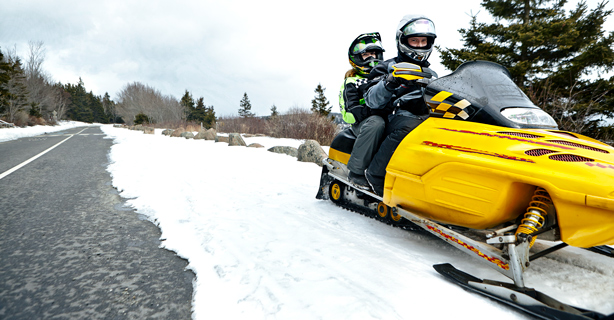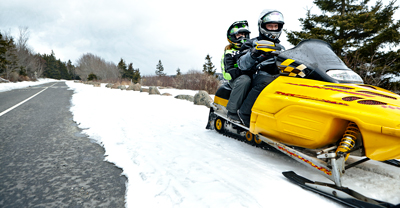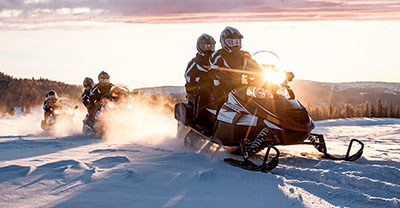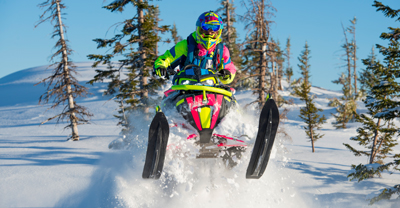Winter snowmobile safety: Protect your passengers


0 min. read
Bringing passengers along for a snowmobile ride is a fantastic way to share the excitement of the sport. Whether you’re enjoying breathtaking winter landscapes or seeking a thrilling adventure, snowmobiling can create unforgettable memories. However, prioritizing the safety of everyone involved—especially inexperienced passengers—is essential. Use these safety tips to help make your winter excursions both safe and enjoyable.

Is your snowmobile designed for passengers?
Before you head out on the snow, confirm your snowmobile is equipped to carry passengers. Check for a "No Passenger” warning label on your sled and consult the owner's manual for specific guidance.
Manufacturers like Ski-Doo® explicitly advise against carrying passengers on snowmobiles not designed for it. Proper passenger equipment includes a designated seat and secure hand grips. Without these features, the added weight can significantly impact the machine’s balance and compromise steering control. An extra rider shifts the sled’s center of gravity and handling characteristics, so verify your setup before each ride.
Top tips for keeping passengers safe
These essential safety practices can help ensure a smooth and secure ride for you and your passenger.
Stay on top of maintenance

Keeping your snowmobile in peak condition is key to safe riding. Before each trip, inspect the sled for potential issues:
Check the alignment of the skis and ensure the track is free of damage.
Verify the lights and battery are working properly.
Check oil, coolant, and fuel levels.
If you’re unsure about performing any maintenance tasks, have your snowmobile professionally serviced at the start of each season.
It's also a good practice to inform your insurer of any updates or modifications to your snowmobile and confirm your policy's passenger coverage. If you have questions about coverage, insurance providers can assist you in exploring available snowmobile insurance options.
Check the forecast

Bad weather can turn a fun outing into a dangerous situation. A quick check of the forecast can help you avoid conditions like blizzards or freezing rain, which drastically reduce visibility and increase the risk of accidents—especially on tree-lined trails.
When riding with a passenger, reduce your speed and increase following distances. This provides more time to react to unexpected situations. If conditions worsen, reduce speed further to maintain optimal control. When stopping, engage the parking brake before your passenger gets on or off the sled to prevent unintended movement.
Ensure proper safety gear

Helmets are non-negotiable for snowmobile passengers. Their helmet should meet or exceed U.S. Department of Transportation (DOT) standards. For eye protection, add shatterproof goggles or a helmet with a built-in visor.
Layered, weather-appropriate clothing is also vital. Garments should fit snugly—no loose items like long scarves or baggy jackets—to prevent entanglement in the sled’s moving parts. As the driver, confirm that your passenger has appropriate gear for a safe and comfortable ride.
Teach your passenger the basics

New or inexperienced passengers can benefit greatly from a pre-ride safety briefing. Explain how to shift their body weight during turns by leaning with the sled and communicate when they should do so while riding.
Show them the proper seating position in the designated passenger seat with both feet on the footrests or running boards. If your snowmobile is designed for two riders, there will be handlebars for the passenger to hold. Emphasize they should avoid holding onto you, as that can interfere with your control.
For extra preparation, share the owner’s manual with your passenger. Many manuals include a dedicated section on passenger safety, with helpful instructions and warnings.
Need affordable snowmobile insurance?
If you’re not sure whether your current insurance covers passengers—some states require it—or if you qualify for snowmobile insurance discounts, the Dairyland® team can assist you in finding the right coverage to help protect you, your riders, and your sled.

Related resources
The general information in this blog is for informational or entertainment purposes only. View our blog disclaimer.
*Data accuracy is subject to this article's publication date.










